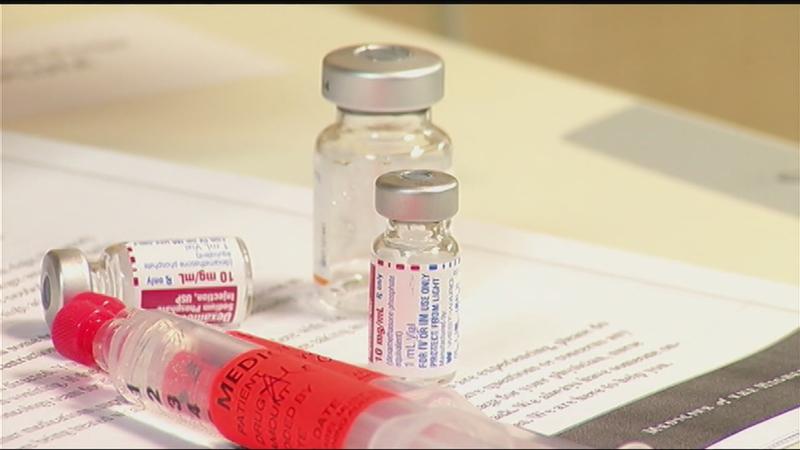Deanna’s Discoveries: The bill battle
[anvplayer video=”4504190″ station=”998131″]
It’s breast cancer awareness month, and we’re tackling a part of the cancer journey that few talk about – the cost.
Cancer patients are more than twice as likely to declare bankruptcy – adding to the extraordinary stress of fighting the disease.
In this edition of Deanna’s Discovery, I find help for patients struggling to pay medical bills.
Because I have cancer, my chest is scanned, my veins are poked, my heart is monitored, and my body is drugged.
And all this costs money.

According to the American Society of Clinical Oncology, newly approved cancer drugs cost on average $10,000.
So if you’re paying 20 percent out of pocket, that’s $24,000 a year just for chemotherapy.
That doesn’t include all the diagnostic testing, doctors’ fees, and facility charges.
So far this year, my family has racked up $7,000 out of pocket for medical expenses even with insurance.
"There is no law that prevents a provider from charging whatever they desire," said Rebecca Reier, owner of Med-Econ, Inc., and frequent witness for providers, insurers and patients in lawsuits concerning medical billing.
Reier says when shopping for medical services, shop around.
"It’s like walking into a car dealership and saying, ‘oh that’s the sticker price, so that’s what I have to pay.’ No one would do that," said Reier.
Instead, you should compare pricing through sites like Fair Health and Healthcare Bluebook which provide the fair market price for medical care in your geographic area.
Self-pay patients can use that information to negotiate a better price.
Insured patients must pay the price the facility has negotiated with your insurer.
For example, many cancer patients have PET scans which is imaging that highlights diseases in the body.
And according to the Healthcare Bluebook, a fair price for a PET scan in the Rochester area is $2,544 dollars. But it will likely be more than that at a hospital.
"The hospital has much higher overhead in maintaining their radiology department," said Reier.
The contracted price my insurance paid University of Rochester Medical Center for a PET scan was $3,726. I pay 20 percent which is $745.
If I had gone to Borg and Ide Imaging, a freestanding facility, its contracted price with my insurance company is $3,215 dollars. My 20 percent co-pay would have been $643. That’s a difference of $102.
"The stand alone imaging clinic does not have the excessive overhead that the hospital does," said Reier.
The difference is similar for those without insurance.
URMC, as well as Borg and Ide, offer self-pay patients a discount.
URMC charges a discounted price of $4,309 dollars for a PET scan. Borg and Ide’s discounted price is $3,389 – a difference of $920.
URMC explains that there are many reasons their charges are higher, including the fact that it’s Rochester’s only Level 1 trauma center, it’s open 24-7, and it treats everyone no matter their ability to pay.
According to hospital spokesman Chip Partner, "The hospital provides more than $40 million in unreimbursed care per year."
Reier says patients should ask questions like, "Is the charge reasonable? Are you charging three times what the person down the street is charging?"
Negotiating the financial cost of care while fighting for your life is tough. I know.
But doing your homework can assure you don’t get an unwelcome surprise when you open the bill.
Keep in mind that Borg and Ide usually ask that you pay your co-pay and or deductible before your scan, requiring patients to possibly pay hundreds up front. But often your scans are less expensive.
URMC has a valuable tool called a health cost estimator allowing patients to determine their out of pocket expenses upfront.
It’s also important for patients to know that the Affordable Care Act requires all non-profit hospitals to tell patients about financial assistance options before using aggressive approaches to collect outstanding bills.
At URMC for example, if your income is 200 percent of the poverty level, you will not be charged for care. But many middle class families likely qualify for some assistance. It’s important for you to apply if you’re having difficulty paying your bills.